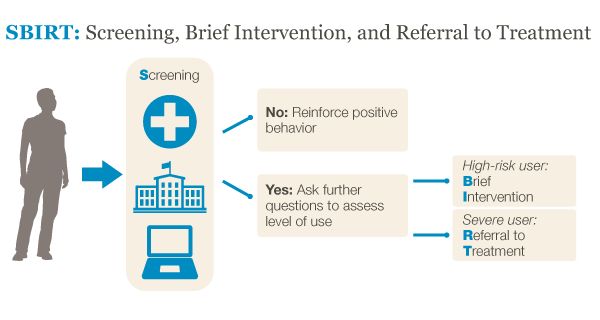In August, the Conrad N. Hilton Foundation launched a substance abuse strategy focused on prevention and early intervention
In August, the Conrad N. Hilton Foundation launched a substance abuse strategy focused on prevention and early intervention. Substance abuse affects people of all ages but has its origins in youth, when the brain is less developed and patterns of substance use are especially risky. Evidence shows that a promising early intervention model—Screening, Brief Intervention, and Referral to Treatment (SBIRT)—provides a cost-effective way to deter users from developing dependency or addiction. This model, however, is not widely available to U.S. youth.
This new strategy reflects the changing understanding of substance abuse and follows a public health approach to address substance use disorders as preventable, treatable chronic health conditions.
Substance use disorders are a leading cause of preventable death and disability, a key contributing factor to all leading causes of teen death, a cause of violent and risky behaviors, and a barrier to successful academic performance and career advancement.
In recent decades, field experts’ understanding of substance abuse has evolved from that of a moral or social failure to a public health issue that recognizes substance use disorders as preventable and treatable chronic conditions.
The human brain, including the areas that support decision making and impulse control, is not fully developed until age 25. This makes youth more vulnerable to engaging in risky behaviors, including experimenting with drugs. The risk of addiction is magnified when substance use is initiated in adolescence.
Screening, Brief Intervention, and Referral to Treatment (SBIRT) is the most widely tested and commonly used early intervention model. SBIRT is most often employed in primary care and emergency departments; however, innovative models are expanding implementation to schools and exploring electronic screening tools, such as online questionnaires.

The figure above shows an individual encountering SBIRT in a heath care setting such as his primary care physician’s office, at his school, or as an online questionnaire. First, he is asked a series of screening questions to determine his level of risk. If he is abstaining from using substances, he receives positive reinforcement and education on the risks of substance use. If he displays a mid- to high-risk profile, he is given a brief intervention, ranging from a motivational conversation to a multi-day workshop. Finally, if he displays a severe abuse problem, he is referred to an addiction treatment provider.
There is a broad base of evidence to support the effectiveness of SBIRT for alcohol use in people over age 18. Evidence is still emerging for SBIRT among younger populations, but early studies are promising and have driven the Substance Abuse and Mental Health Services Administration (SAMHSA) and the American Association of Pediatrics to endorse the use of SBIRT for youth. Despite its effectiveness, SBIRT is rarely taught in medical or nursing schools, and its practice is largely limited to clinical settings that reach only a small percentage of the nation’s youth.
In August, the Foundation launched a new strategy to ensure youth substance use and abuse are detected and addressed through implementation of early intervention, primarily the SBIRT model. The Foundation will partner with national medical associations, medical educators, advocacy organizations, technical assistance providers, and research institutions to:
In November of 2011, our board of directors reaffirmed the importance of substance use prevention as a priority for Foundation grantmaking and requested that Foundation staff develop a new strategy for achieving measurable impact in this area. Consultants from FSG were brought on board to carry out a landscape research project and to outline and recommend a strategy informed by the Foundation’s past work and input from experts and practitioners in the field. On August 21, 2012, our board of directors approved the Substance Abuse strategy.
Documentation of the process, as well as an overview of our program strategy, is available on our website.